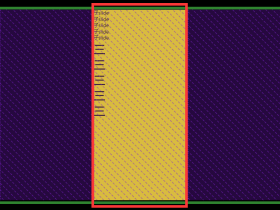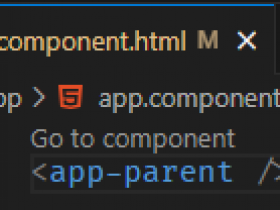- A+
今天我要分享的是10个超棒的JavaScript简写方法,可以加快开发速度,让你的开发工作事半功倍哦。
开始吧!
1. 合并数组
普通写法:
我们通常使用Array中的concat()方法合并两个数组。用concat()方法来合并两个或多个数组,不会更改现有的数组,而是返回一个新的数组。请看一个简单的例子:
let apples = ['?', '?']; let fruits = ['?', '?', '?'].concat(apples); console.log( fruits ); //=> ["?", "?", "?", "?", "?"] 简写方法:
我们可以通过使用ES6扩展运算符(...)来减少代码,如下所示:
let apples = ['?', '?']; let fruits = ['?', '?', '?', ...apples]; // <-- here console.log( fruits ); //=> ["?", "?", "?", "?", "?"] 得到的输出与普通写法相同。
2. 合并数组(在开头位置)
普通写法:
假设我们想将apples数组中的所有项添加到Fruits数组的开头,而不是像上一个示例中那样放在末尾。我们可以使用Array.prototype.unshift()来做到这一点:
let apples = ['?', '?']; let fruits = ['?', '?', '?']; // Add all items from apples onto fruits at start Array.prototype.unshift.apply(fruits, apples) console.log( fruits ); //=> ["?", "?", "?", "?", "?"] 现在红苹果和绿苹果会在开头位置合并而不是末尾。
简写方法:
我们依然可以使用ES6扩展运算符(...)缩短这段长代码,如下所示:
let apples = ['?', '?']; let fruits = [...apples, '?', '?', '?']; // <-- here console.log( fruits ); //=> ["?", "?", "?", "?", "?"] 3. 克隆数组
普通写法:
我们可以使用Array中的slice()方法轻松克隆数组,如下所示:
let fruits = ['?', '?', '?', '?']; let cloneFruits = fruits.slice(); console.log( cloneFruits ); //=> ["?", "?", "?", "?"] 简写方法:
我们可以使用ES6扩展运算符(...)像这样克隆一个数组:
let fruits = ['?', '?', '?', '?']; let cloneFruits = [...fruits]; // <-- here console.log( cloneFruits ); //=> ["?", "?", "?", "?"] 4. 解构赋值
普通写法:
在处理数组时,我们有时需要将数组“解包”成一堆变量,如下所示:
let apples = ['?', '?']; let redApple = apples[0]; let greenApple = apples[1]; console.log( redApple ); //=> ? console.log( greenApple ); //=> ? 简写方法:
我们可以通过解构赋值用一行代码实现相同的结果:
let apples = ['?', '?']; let [redApple, greenApple] = apples; // <-- here console.log( redApple ); //=> ? console.log( greenApple ); //=> ? 5. 模板字面量
普通写法:
通常,当我们必须向字符串添加表达式时,我们会这样做:
// Display name in between two strings let name = 'Palash'; console.log('Hello, ' + name + '!'); //=> Hello, Palash! // Add & Subtract two numbers let num1 = 20; let num2 = 10; console.log('Sum = ' + (num1 + num2) + ' and Subtract = ' + (num1 - num2)); //=> Sum = 30 and Subtract = 10 简写方法:
通过模板字面量,我们可以使用反引号(),这样我们就可以将表达式包装在${...}`中,然后嵌入到字符串,如下所示:
// Display name in between two strings let name = 'Palash'; console.log(`Hello, ${name}!`); // <-- No need to use + var + anymore //=> Hello, Palash! // Add two numbers let num1 = 20; let num2 = 10; console.log(`Sum = ${num1 + num2} and Subtract = ${num1 - num2}`); //=> Sum = 30 and Subtract = 10 6. For循环
普通写法:
我们可以使用for循环像这样循环遍历一个数组:
let fruits = ['?', '?', '?', '?']; // Loop through each fruit for (let index = 0; index < fruits.length; index++) { console.log( fruits[index] ); // <-- get the fruit at current index } //=> ? //=> ? //=> ? //=> ? 简写方法:
我们可以使用for...of语句实现相同的结果,而代码要少得多,如下所示:
let fruits = ['?', '?', '?', '?']; // Using for...of statement for (let fruit of fruits) { console.log( fruit ); } //=> ? //=> ? //=> ? //=> ? 7. 箭头函数
普通写法:
要遍历数组,我们还可以使用Array中的forEach()方法。但是需要写很多代码,虽然比最常见的for循环要少,但仍然比for...of语句多一点:
let fruits = ['?', '?', '?', '?']; // Using forEach method fruits.forEach(function(fruit){ console.log( fruit ); }); //=> ? //=> ? //=> ? //=> ? 简写方法:
但是使用箭头函数表达式,允许我们用一行编写完整的循环代码,如下所示:
let fruits = ['?', '?', '?', '?']; fruits.forEach(fruit => console.log( fruit )); // <-- Magic ✨ //=> ? //=> ? //=> ? //=> ? 大多数时候我使用的是带箭头函数的forEach循环,这里我把for...of语句和forEach循环都展示出来,方便大家根据自己的喜好使用代码。
8. 在数组中查找对象
普通写法:
要通过其中一个属性从对象数组中查找对象的话,我们通常使用for循环:
let inventory = [ {name: 'Bananas', quantity: 5}, {name: 'Apples', quantity: 10}, {name: 'Grapes', quantity: 2} ]; // Get the object with the name `Apples` inside the array function getApples(arr, value) { for (let index = 0; index < arr.length; index++) { // Check the value of this object property `name` is same as 'Apples' if (arr[index].name === 'Apples') { //=> ? // A match was found, return this object return arr[index]; } } } let result = getApples(inventory); console.log( result ) //=> { name: "Apples", quantity: 10 } 简写方法:
哇!上面我们写了这么多代码来实现这个逻辑。但是使用Array中的find()方法和箭头函数=>,允许我们像这样一行搞定:
// Get the object with the name `Apples` inside the array function getApples(arr, value) { return arr.find(obj => obj.name === 'Apples'); // <-- here } let result = getApples(inventory); console.log( result ) //=> { name: "Apples", quantity: 10 } 9. 将字符串转换为整数
普通写法:
parseInt()函数用于解析字符串并返回整数:
let num = parseInt("10") console.log( num ) //=> 10 console.log( typeof num ) //=> "number" 简写方法:
我们可以通过在字符串前添加+前缀来实现相同的结果,如下所示:
let num = +"10"; console.log( num ) //=> 10 console.log( typeof num ) //=> "number" console.log( +"10" === 10 ) //=> true 10. 短路求值
普通写法:
如果我们必须根据另一个值来设置一个值不是falsy值,一般会使用if-else语句,就像这样:
function getUserRole(role) { let userRole; // If role is not falsy value // set `userRole` as passed `role` value if (role) { userRole = role; } else { // else set the `userRole` as USER userRole = 'USER'; } return userRole; } console.log( getUserRole() ) //=> "USER" console.log( getUserRole('ADMIN') ) //=> "ADMIN" 简写方法:
但是使用短路求值(||),我们可以用一行代码执行此操作,如下所示:
function getUserRole(role) { return role || 'USER'; // <-- here } console.log( getUserRole() ) //=> "USER" console.log( getUserRole('ADMIN') ) //=> "ADMIN" 基本上,expression1 || expression2被评估为真表达式。因此,这就意味着如果第一部分为真,则不必费心求值表达式的其余部分。
补充几点
箭头函数
如果你不需要this上下文,则在使用箭头函数时代码还可以更短:
let fruits = ['?', '?', '?', '?']; fruits.forEach(console.log); 在数组中查找对象
你可以使用对象解构和箭头函数使代码更精简:
// Get the object with the name `Apples` inside the array const getApples = array => array.find(({ name }) => name === "Apples"); let result = getApples(inventory); console.log(result); //=> { name: "Apples", quantity: 10 } 短路求值替代方案
const getUserRole1 = (role = "USER") => role; const getUserRole2 = role => role ?? "USER"; const getUserRole3 = role => role ? role : "USER"; 最后,我想借用一段话来作结尾:
代码之所以是我们的敌人,是因为我们中的许多程序员写了很多很多的狗屎代码。如果我们没有办法摆脱,那么最好尽全力保持代码简洁。
如果你喜欢写代码——真的,真的很喜欢写代码——你代码写得越少,说明你的爱意越深。
欢迎关注我的




